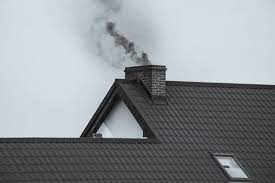The cozy crackle of a fireplace creates a haven of warmth and comfort during chilly months, but behind this idyllic scene lies an essential maintenance task often overlooked: chimney cleaning. Beyond its aesthetic appeal, a clean chimney is crucial for safety, efficiency, and the longevity of your home. Let's delve into the art and science of chimney cleaning to understand its significance and best practices.
Understanding the Importance:
Safety First
A neglected chimney accumulates creosote, a highly flammable substance resulting from burning wood. The buildup of creosote poses a severe fire hazard. Regular cleaning reduces this risk, ensuring a safer environment for your family.
Efficient Performance
A clean chimney facilitates proper ventilation, allowing smoke, gases, and other byproducts to exit your home efficiently. This promotes optimal fireplace performance, preventing potential smoke issues or carbon monoxide buildup.
Structural Integrity
Over time, chimneys may gather debris, such as animal nests or fallen masonry, compromising their structural integrity. Routine cleaning helps identify and address these issues before they escalate, preserving the chimney's functionality and preventing costly repairs.
The Art of Chimney Cleaning:
Professional Expertise
Engaging a certified chimney sweep is the first step in ensuring a thorough cleaning. These professionals possess the knowledge, tools, and experience to meticulously clean the chimney, inspect for damages, and offer expert advice.
Comprehensive Inspection
A comprehensive inspection precedes cleaning. This entails examining the chimney's interior and exterior, checking for cracks, loose bricks, or signs of water damage that could compromise its integrity.
Methodical Cleaning Process
Using specialized tools and techniques, chimney sweeps remove creosote, soot, and debris from the flue, smoke chamber, and damper. They ensure a meticulous clean without damaging the chimney's structure or the interior of your home.
DIY Maintenance Tips:
Regular Inspection
Periodically check your chimney for visible signs of buildup or damage. Use a flashlight to examine the flue for creosote buildup or any blockages.
Safe Burning Practices
Burn seasoned hardwoods to minimize creosote buildup. Avoid burning materials like treated wood, cardboard, or trash, as they produce excessive residue.
Use of Protective Gear
If attempting DIY cleaning, wear protective gear, including gloves and a mask, to shield against soot and debris inhalation.
Conclusion:
Chimney cleaning is an art form that blends expertise, precision, and care. Whether through professional services or DIY maintenance, regular chimney cleaning is a vital aspect of home safety and maintenance. By prioritizing this task, homeowners ensure not only a cozy atmosphere but also the preservation of their home's integrity and their family's well-being. Remember, a clean chimney not only offers warmth but also peace of mind.
Investing time and resources into chimney maintenance isn't just about the cleanliness of a vent; it's a commitment to the safety and longevity of your cherished home.


No comments yet